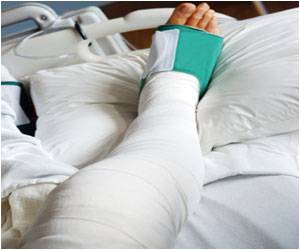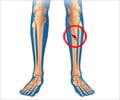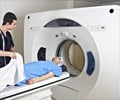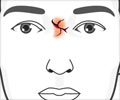The most common type of hip fracture, the femoral neck fracture, increases the risk of complications for the patients.

Researchers at Hospital for Special Surgery developed a specially sequenced, contrast-enhanced MRI to identify potential problems so doctors can intervene early and prevent further damage to the joint.
"This new MRI greatly improves the visualization of bone and soft tissue when there is metal in a joint, such as the screws used to repair a hip fracture," explained Hollis G. Potter, M.D., Chairman of the Department of Radiology and Imaging at HSS.
A study on this subject, titled "Femoral Head Osteonecrosis Following Anatomic Stable Fixation of Femoral Neck Fractures: An in-vivo MRI Study" will be presented at the annual meeting of the American Academy of Orthopaedic Surgeons (AAOS) in New Orleans on March 11, 2014.
The Department of Radiology and Imaging at HSS is known internationally as a premier center for world class musculoskeletal clinical and research imaging. "Imaging is a vital component of the integrated care system provided by HSS," said Dr. Potter. "Our team is constantly optimizing the ability to image the earliest signs of a musculoskeletal condition, disease progression and/or healing."
Despite advances in surgical hardware and techniques, femoral neck fractures remain a significant clinical challenge. The primary complications arising from femoral neck fractures are non-union and osteonecrosis, which occurs when the blood supply to the bone is disrupted. This causes bone cells to die, which can destroy the joint and lead to arthritis.
Advertisement
In the study, patients had an MRI known as a "multi-acquisition variable-resonance image combination," or MAVRIC MRI, three months and 12 months after surgery. "The MAVRIC MRI provided us with information that could not be ascertained from x-rays or a standard MRI," Dr. Potter explained. "A special 3-D fast spin echo technique minimized distortion caused by metal screws used to repair the fracture, facilitating assessment of the hip joint and any potential problems concerning osteonecrosis or non-union."
Advertisement
Source-Eurekalert















